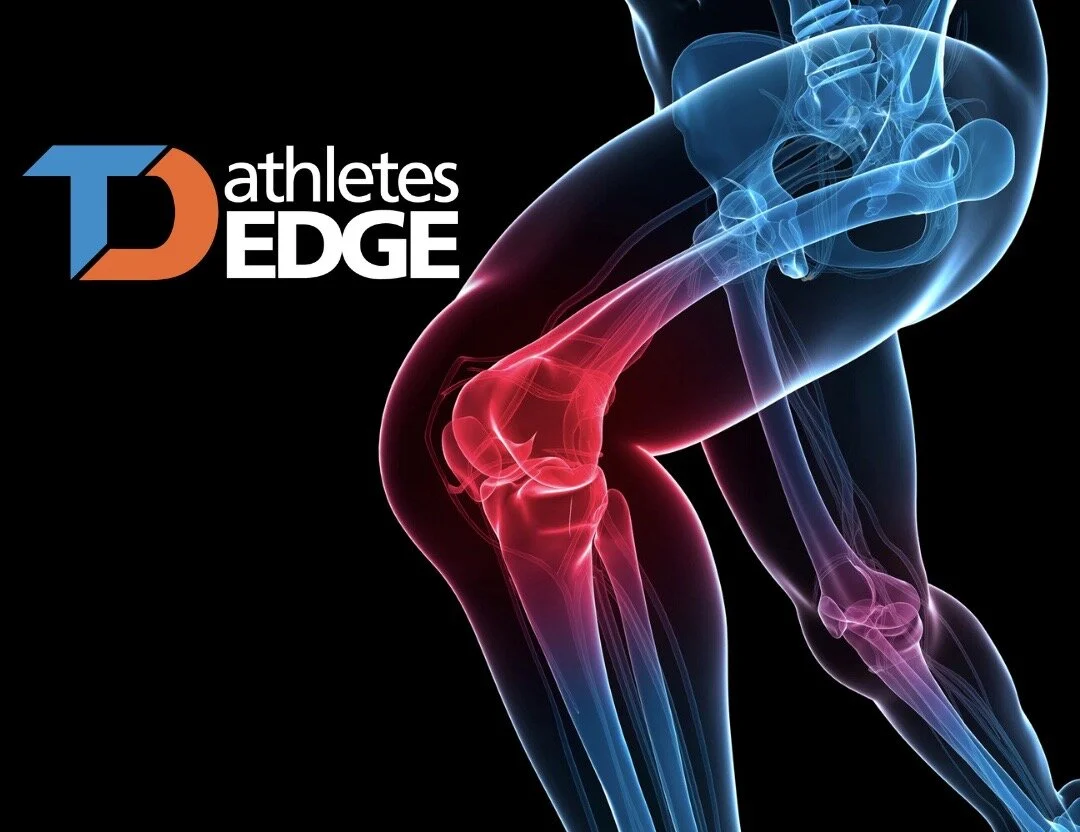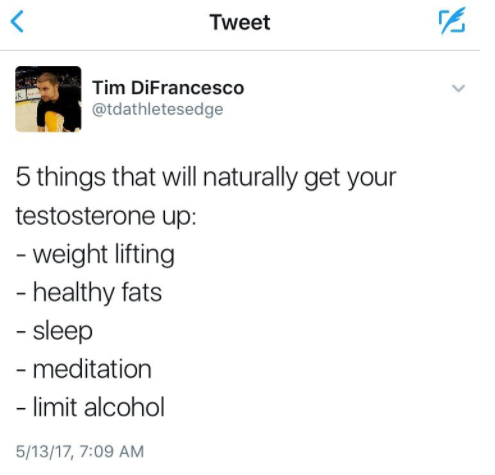Lower extremity injuries have an incredibly high prevalence in sports. Unfortunately, the occurrence of these injuries has already become intertwined with athletic culture…
Viewing entries in
Sports Science
I have a question for you: Would you run 5 miles as hard as you can on rough terrain after having been on a hiatus from running for 8-10 months? Probably not. Next question: If you did do that, would you expect your body to feel great during and in the days after? Probably not.
Rather than looking for help with low testosterone levels from an infomercial try these 5 natural strategies:
Networking and communicating directly with NBA strength & conditioning professionals can be tough. My colleagues around the league and I dedicate as much time each week as we have communicating with aspiring or inquiring likeminded strength & conditioning pros. The problem is, there's not much time!
An athlete staring into their phone before they doze off for the night is telling their brain and body that "it's daytime, wake up!"
When it comes to training, there is a constant barrage of new technology that’s supposed to revolutionize how we perform, recover, and stay injury-free. Though many companies claim to do everything from calculate intensity, fatigue, speed, strength, and power, the question seems to have shifted from should I get this to how many do I need. Before you invest your money and time into the latest technology, here are a few things to consider before you swipe your card.
Not all calories are created equal but counting calories assumes this. Counting calories 1 for 1 assumes that 1 calorie from a donut is the same as 1 calorie from a carrot. Clearly calories from different foods perform differently in the body.
It's easy to see how a universal overreaction to vitamin D has developed. Widespread vitamin D deficiency has consistently been reported, the critical functions/benefits of vitamin D are regularly raved about and it's a crudely understood vitamin at best.
Part 1 of this 3 part post looked at some of the secondary factors behind what makes durability so elusive for today's athlete. Part 2 then captured the training environment that today's athletes and fitness diehards live in, how/why it has changed and what that means for staying healthy. Here in part 3, we finally uncover the #1 reason that durability is so elusive for today's athlete and look at a straightforward solution.
In part 1 of this post, I gave attention to the secondary factors that make avoiding injury such a tall task for young athletes: poor sleep, fumbled nutrition, sport overuse and too much sitting. These factors warrant attention but even if an athlete fixed each, they would still find themselves chasing durability until they addressed the primary reason that durability is elusive for today's athlete. Let's examine today's training environment to identify the primary reason that robust and resilient young athletes are a dying breed.
If you are involved in competitive athletics at any age or level then you know that unnecessary non-contact injuries are a significant and persistent issue. How is this possible when more science and technology is swirling around sports equipment and human performance than ever before?
A few extra miles per hour on your fastball can change everything. This study set out to determine if baseball players could increase their velocity in just 6 weeks. Here's what they found and my take on it all.
Planks, turkish get-ups, kettlebell swings, loaded carries and battle ropes - within the last 5 to 10 years they have each taken their turn as the latest and greatest viral exercise. I'm not doubting that the popular exercises listed above deserve the label of great, but just because they're great for lots of people doesn't mean they are right for you. Here's how to recognize if you are resistant to a great exercise:
This post is designed to bring attention to the criminal activity within your diet that is happening below the surface without you knowing
A recent article on the potential benefits of drinking soda is a classic example of cherry-picking a portion of research findings and then translating it in a way that creates shock-value.
The FDA busted down the doors of KIND Snacks and went in for the big take down. They targeted KIND Bars as having too much "evil" saturated fat to be called "healthy." It's nice to see that the FDA is out patrolling grocery store aisles and trying to protect consumers from dietary delinquents. That is, it would be nice to see if they knew what you and I know: saturated fat is not so evil...
Having your pelvis out of position while training may seem like a trivial slip-up. Who really cares where your pelvis is as long as you are burning calories, pounding pavement or pushing weight around? I do. Here is why you should too and how to become a pelvic awareness pro.
Yahoo Health just posted an article highlighting the bags on bags of daily vitamins, minerals or supplement pills that Khloe Kardashian pops and posed the question: is it possible to overdo or overdose on supplements?




















